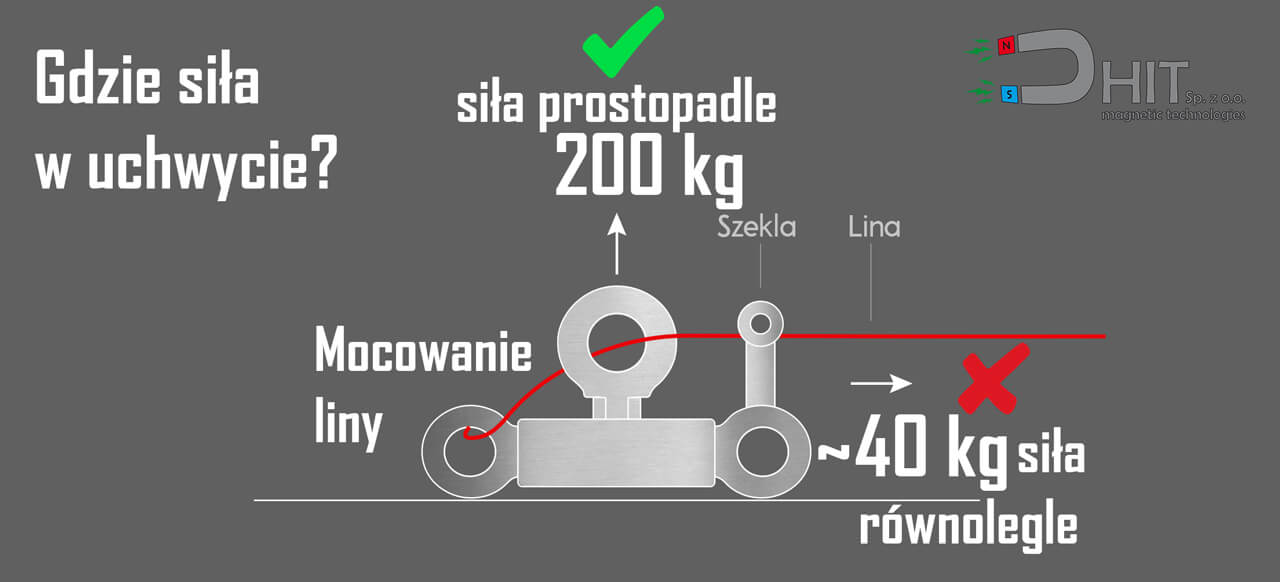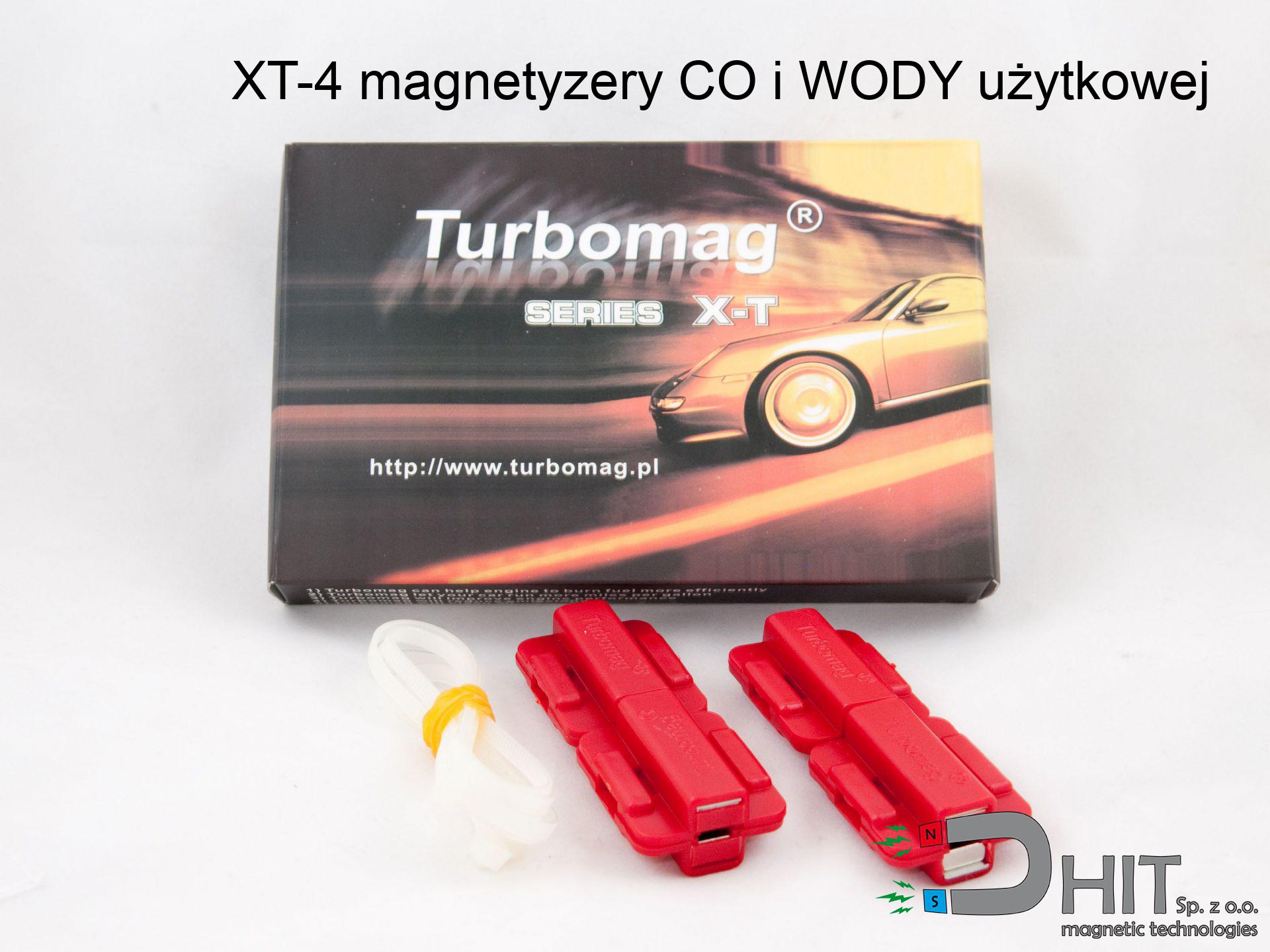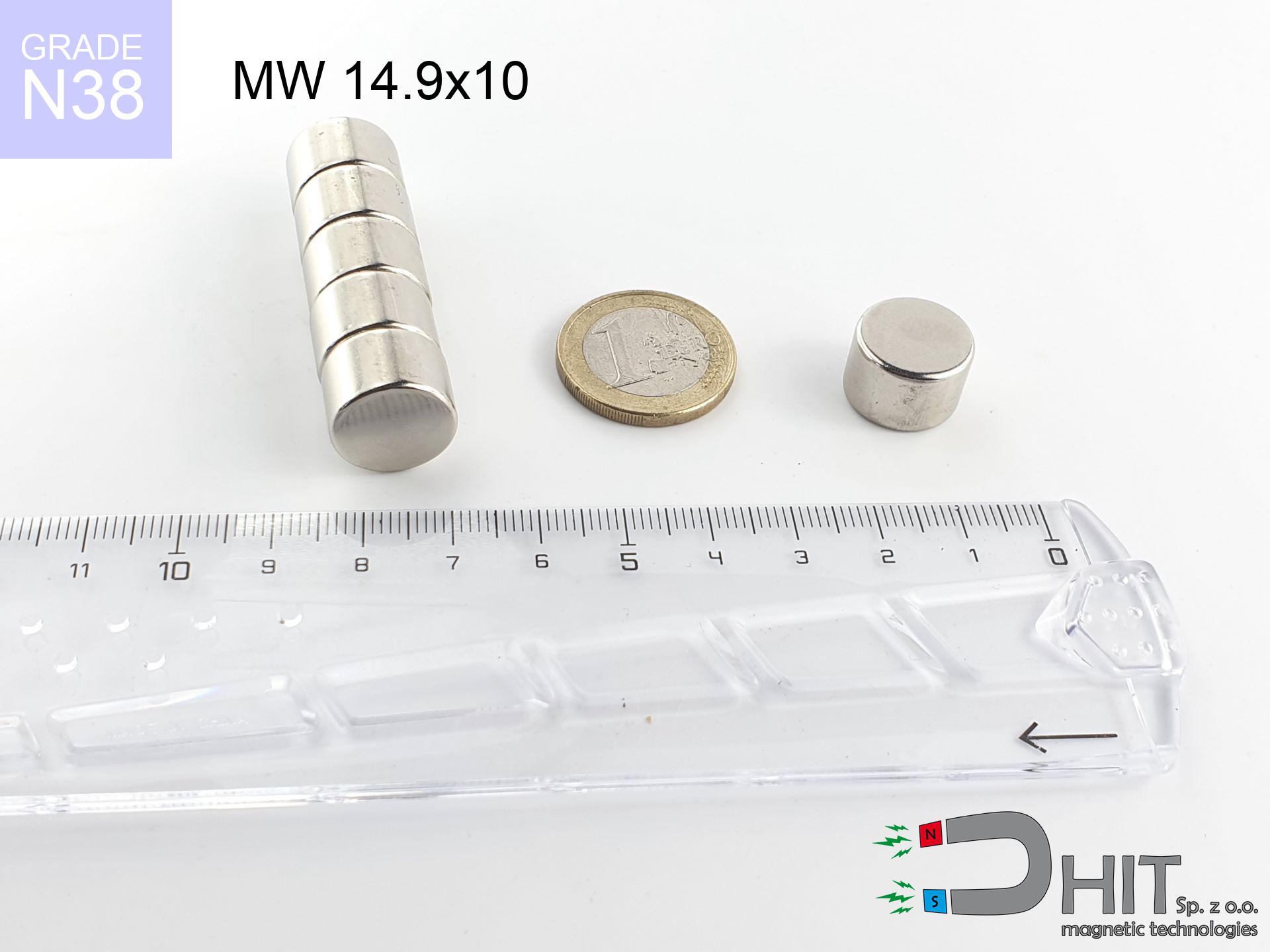UMP 135x40 [M10+M12] GW F600 Lina / N38 - search holder
search holder
Catalog no 210385
GTIN: 5906301814047
Diameter Ø [±0,1 mm]
135 mm
Height [±0,1 mm]
40 mm
Weight
4300 g
Load capacity
680 kg / 6668.52 N
Coating
[NiCuNi] nickel
649.99 ZŁ with VAT / pcs + price for transport
528.45 ZŁ net + 23% VAT / pcs
bulk discounts:
Need more?Want to talk magnets?
Call us now
+48 22 499 98 98
or let us know by means of
form
our website.
Specifications along with appearance of magnets can be calculated on our
modular calculator.
Order by 14:00 and we’ll ship today!
UMP 135x40 [M10+M12] GW F600 Lina / N38 - search holder
Magnetic properties of material N38
Physical properties of NdFeB
Shopping tips

Advantages and disadvantages of neodymium magnets NdFeB.
Apart from their notable power, neodymium magnets have these key benefits:
- They do not lose their magnetism, even after nearly 10 years – the decrease of power is only ~1% (based on measurements),
- They are highly resistant to demagnetization caused by external magnetic fields,
- Thanks to the glossy finish and nickel coating, they have an aesthetic appearance,
- Magnetic induction on the surface of these magnets is notably high,
- These magnets tolerate high temperatures, often exceeding 230°C, when properly designed (in relation to form),
- With the option for fine forming and targeted design, these magnets can be produced in multiple shapes and sizes, greatly improving design adaptation,
- Significant impact in cutting-edge sectors – they find application in computer drives, electromechanical systems, healthcare devices as well as technologically developed systems,
- Compactness – despite their small size, they provide high effectiveness, making them ideal for precision applications
Disadvantages of rare earth magnets:
- They are fragile when subjected to a sudden impact. If the magnets are exposed to shocks, it is advisable to use in a metal holder. The steel housing, in the form of a holder, protects the magnet from damage while also increases its overall strength,
- High temperatures may significantly reduce the strength of neodymium magnets. Typically, above 80°C, they experience permanent weakening in performance (depending on height). To prevent this, we offer heat-resistant magnets marked [AH], capable of working up to 230°C, which makes them perfect for high-temperature use,
- They rust in a humid environment. For outdoor use, we recommend using encapsulated magnets, such as those made of rubber,
- Using a cover – such as a magnetic holder – is advised due to the restrictions in manufacturing fine shapes directly in the magnet,
- Possible threat due to small fragments may arise, if ingested accidentally, which is crucial in the protection of children. Moreover, small elements from these assemblies can hinder health screening after being swallowed,
- High unit cost – neodymium magnets are more expensive than other types of magnets (e.g., ferrite), which may limit large-scale applications
Precautions
Neodymium magnets are the strongest magnets ever invented. Their strength can surprise you.
Read the information on our website on how to properly utilize neodymium magnets and avoid significant harm to your body and unintentional disruption to the magnets.
Avoid contact with neodymium magnets if you have a nickel allergy.
Studies clearly indicate a small percentage of people who suffer from metal allergies such as nickel. An allergic reaction often manifests as skin redness and rash. If you have a nickel allergy, you can try wearing gloves or simply avoid direct contact with nickel-plated neodymium magnets.
Keep neodymium magnets as far away as possible from GPS and smartphones.
Intense magnetic fields generated by neodymium magnets interfere with compasses and magnetometers used in navigation, as well as internal compasses of smartphones and GPS devices.
Neodymium magnets should not be around youngest children.
Neodymium magnets are not toys. You cannot allow them to become toys for children. In the case of small magnets, they can be swallowed and cause choking. In such cases, the only solution is to undergo surgery to remove the magnets, and otherwise, it can even lead to death.
Neodymium magnets are not recommended for people with pacemakers.
In the case of neodymium magnets, there is a strong magnetic field. As a result, it interferes with the operation of a heart pacemaker. Even if the magnetic field does not affect the device, it can damage its components or deactivate the entire device.
Make sure not to bring neodymium magnets close to the TV, wallet, and computer HDD.
Magnetic fields generated by neodymium magnets can damage magnetic storage media such as floppy disks, credit cards, magnetic ID cards, cassette tapes, video tapes, or other similar devices. In addition, they can damage televisions, VCRs, computer monitors, and CRT displays. Avoid placing neodymium magnets in close proximity to electronic devices.
Dust and powder from neodymium magnets are highly flammable.
Do not attempt to drill into neodymium magnets. Mechanical processing is also not recommended. Once crushed into fine powder or dust, this material becomes highly flammable.
Neodymium magnets can become demagnetized at high temperatures.
Although magnets have demonstrated their effectiveness up to 80°C or 175°F, the temperature can vary depending on the type, shape, and intended use of the specific magnet.
Magnets made of neodymium are highly susceptible to damage, resulting in breaking.
Neodymium magnetic are delicate as well as will crack if allowed to collide with each other, even from a distance of a few centimeters. They are coated with a shiny nickel plating similar to steel, but they are not as hard. At the moment of connection between the magnets, tiny sharp metal fragments can be propelled in various directions at high speed. Eye protection is recommended.
It is crucial not to allow the magnets to pinch together uncontrollably or place your fingers in their path as they attract to each other.
Magnets will jump and touch together within a distance of several to almost 10 cm from each other.
Safety precautions!
So you are aware of why neodymium magnets are so dangerous, read the article titled How dangerous are strong neodymium magnets?.

![holders for fishing in water UMP 135x40 [M10+M12] GW F600 Lina / N38 holders for fishing in water UMP 135x40 [M10+M12] GW F600 Lina / N38](https://cdn3.dhit.pl/graphics/banners/magnet.webp)
![UMP 135x40 [M10+M12] GW F600 Lina / N38 - search holder](https://cdn3.dhit.pl/graphics/products/ump-135x40-m10+m12-gw-f600-+lina-sej.jpg)
![UMGW 75x33x18 [M10] GW / N38 - magnetic holder internal thread UMGW 75x33x18 [M10] GW / N38 - magnetic holder internal thread](https://cdn3.dhit.pl/graphics/products/umgw-75x33x18-m10-gw-cak.jpg)



